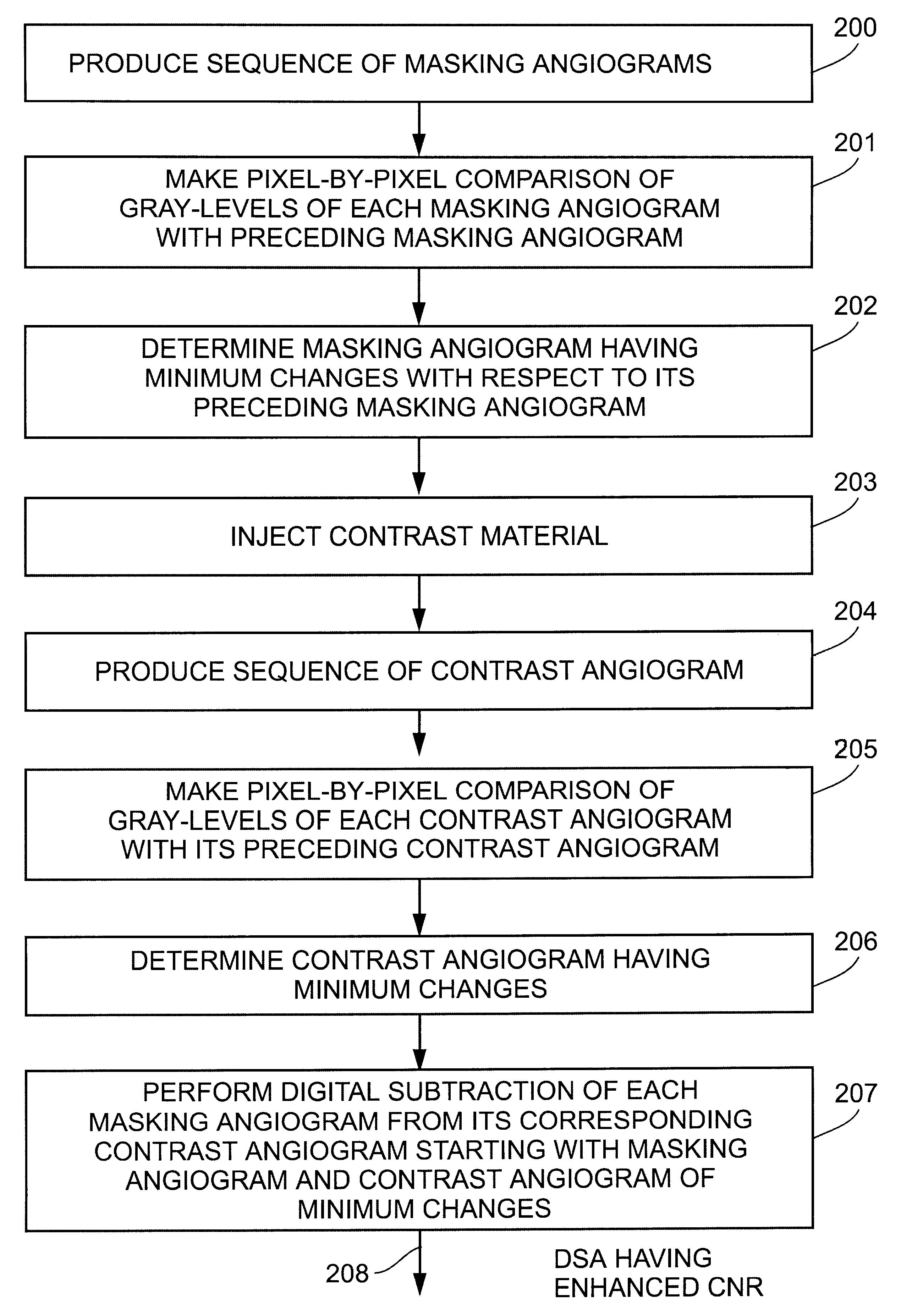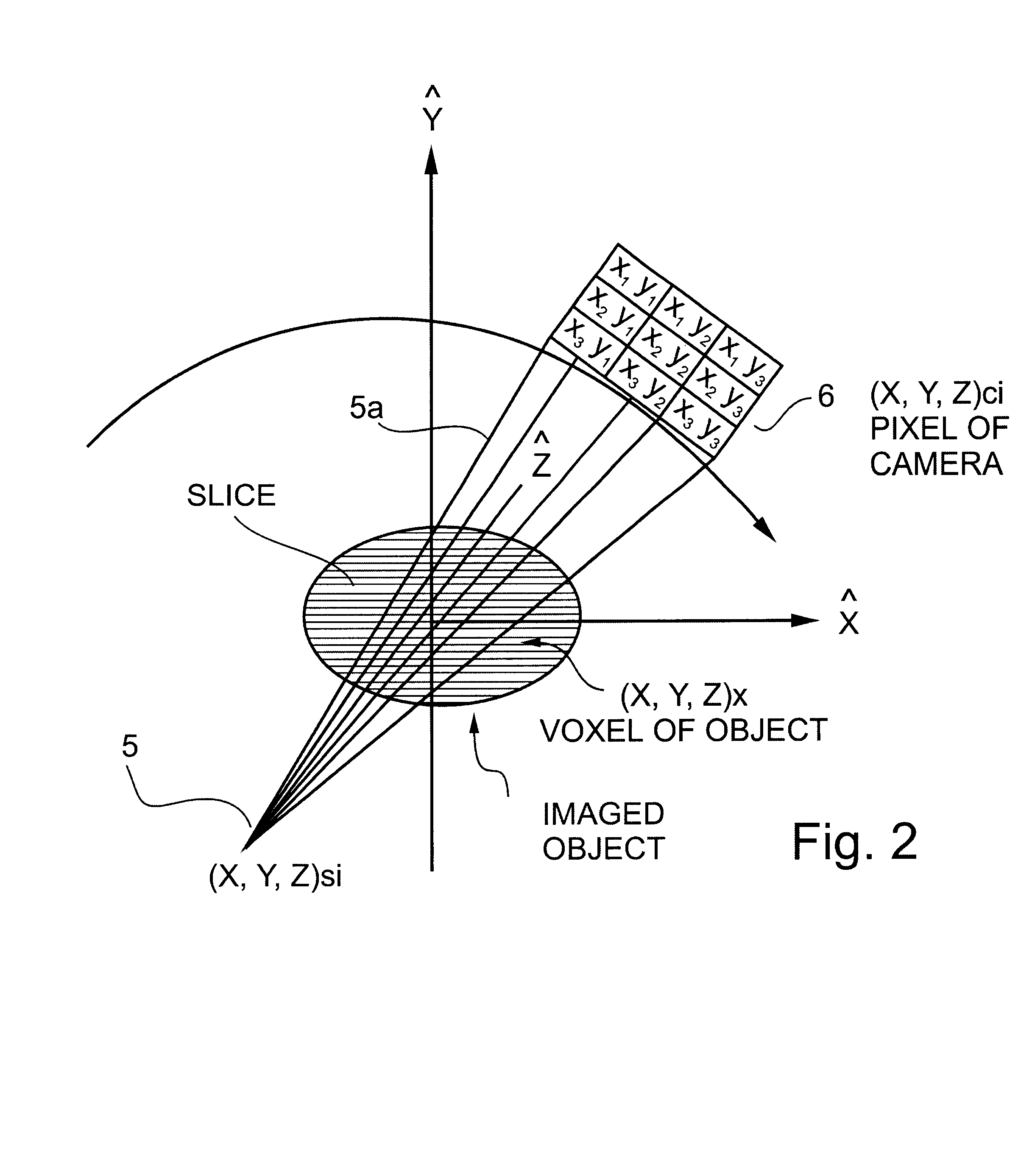Imaging methods and apparatus particularly useful for two and three-dimensional angiography
a two-dimensional angiography and angiography technology, applied in angiography, medical science, diagnostics, etc., can solve the problem of inaccurate reference using a respiration sensor, and achieve the effect of enhancing the cnr of a dsa image and enabling diagnosis or treatmen
- Summary
- Abstract
- Description
- Claims
- Application Information
AI Technical Summary
Benefits of technology
Problems solved by technology
Method used
Image
Examples
Embodiment Construction
The Embodiment of FIGS. 1-6
FIG. 1 schematically illustrates one form of apparatus constructed in accordance with the present invention particularly useful for producing either two-dimensional angiographs and / or three-dimensional angiographs of a patient's vascular system.
The system illustrated in FIG. 1 includes a horizontal support such as a table 2 for the patient 3 under examination, and a gantry C-arm 4, such as used in CT examination apparatus, enclosing the patient's body 3. The C-arm supports a radiation source 5 at one side of the patient's body, and a radiation detector 6 at the opposite side and in alignment with the radiation source. The radiation source 5 is an X-ray point source which produces a conical beam 5a as shown in FIG. 2; and the radiation detector 6, preferably a CCD camera, includes a two-dimensional matrix of detector elements as best seen in FIG. 4. As shown particularly in FIG. 2, the conical beam 5a produced by the radiation source 5 in each angular posit...
PUM
 Login to View More
Login to View More Abstract
Description
Claims
Application Information
 Login to View More
Login to View More - R&D
- Intellectual Property
- Life Sciences
- Materials
- Tech Scout
- Unparalleled Data Quality
- Higher Quality Content
- 60% Fewer Hallucinations
Browse by: Latest US Patents, China's latest patents, Technical Efficacy Thesaurus, Application Domain, Technology Topic, Popular Technical Reports.
© 2025 PatSnap. All rights reserved.Legal|Privacy policy|Modern Slavery Act Transparency Statement|Sitemap|About US| Contact US: help@patsnap.com



